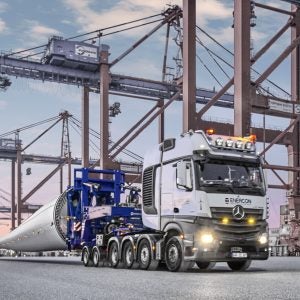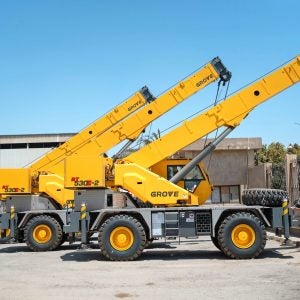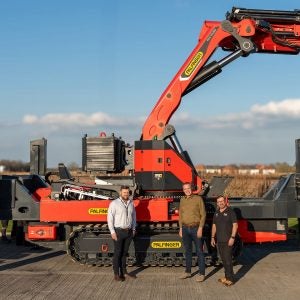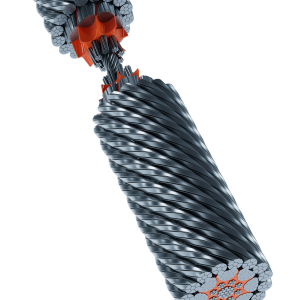“Record revenue is the result of the rigorous implementation of our internationalisation, diversification, and innovation strategy. We are expecting profitable growth and record revenue for 2006 as well,” said chief executive officer Wolfgang Anzengruber.
Consolidated net profit for the period of Eur 12.5m – compared to Eur 12.8m – resulted in earnings per share of Eur 1.42. Based on the successful performance of the first quarter, the equity ratio at balance sheet date rose to 50.6%.
Investment in property, plant and equipment to the amount of Eur 3.7m was mostly made up of necessary additions to capacity and replacement investments on account of productivity increases, and showed, according to the company, that Palfinger is able to finance further growth under its own steam.
Business in Europe remained the driving force behind the positive performance. Development was also significant in the markets of North and South America, where revenue increased by 17.4% to Eur 14.6m. Sales successes in the cranes segment in North America and the appreciation of the Brazilian Real resulted in positive EBIT (earnings before interest and tax) of Eur 0.2m.
In the product groups, the profitable development of the cranes business in Europe is marked by a shift in demand to higher performance classes and high-grade fittings of knuckle boom cranes. Sales of EPSILON in Europe also contributed to solid growth. The hydraulic systems and services segment increased revenue by 23.6% to Eur 43.2m and earnings rose to Eur -0.9m, up from Eur -2.4m.
Continued growth is expected for the whole of the 2006 financial year. Focus of activities is on implementing planned capacity expansions, increasing potentials to enhance further the performance of the hydraulic systems segment and on further increasing efficiency on a group level.
Palfinger believes it is still only at the onset of what will prove to be a prolonged period of market domination. It is already at the zenith of the loader crane market with other companies in the market arguably fighting amongst themselves. They are doing something right. And, according to marketing manager Wolfgang Pilz, these impressive figures will continue to be eclipsed.
“Our plans,” he explained, “are always long-term and this growth is part of our expansion over a number of years.” Pilz said that last year’s impressive results were no surprise and, whilst admitting that any market is only predictible to a certain extent, it represents the coming together of a long-term business strategy.
With no expectation of an imminent decline in global oil prices, economic booms in Saudi Arabia, Kuwait, Qatar, and the UAE are likely to continue for the next couple of years. “This is good for the crane business,” said Pilz. He added that demand in the Middle East will feed demand elsewhere and he noted that the signs are good in most of Europe.
He hopes this will kick-start Germany into life – she had another bad year in 2005. The construction economy is still in bad shape there as it has been for the last seven or eight years. Some estimates suggest the industry has lost over 400,000 employees during that time, which gives an indication of the seriousness of the situation.
By contrast, Pilz said Italy, France and Spain are all providing work and loader cranes are busy in steady market places. Australia and New Zealand are other examples of regions experiencing growth.
Pilz said construction still provides 70% of the work for loader cranes and this trend is consistent across the globe. But they do sometimes vary, said Pilz, and this is why it is important to adapt marketing strategies depending on the country or region in which they are working.
For example, he explained, one thing may be widely accepted in Europe but in the US they like telescopic cranes. In Asia, he added, the trends are different again.
“Our goal is to establish ourselves as trend-setters in all the markets, whilst accepting that elements to our service like electronics, efficiency, speed and safety will remain at the highest level,” Pilz concluded.






